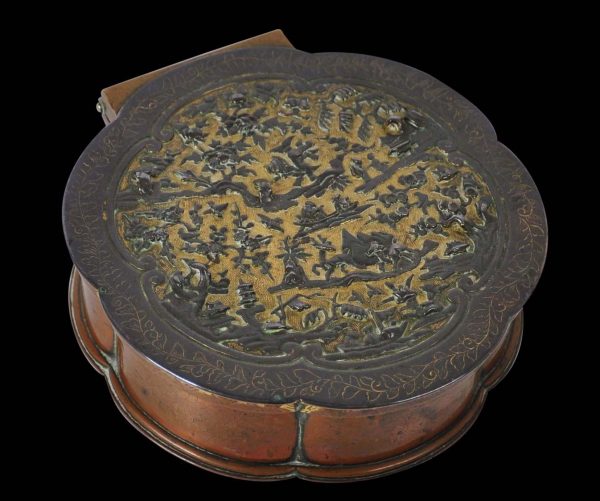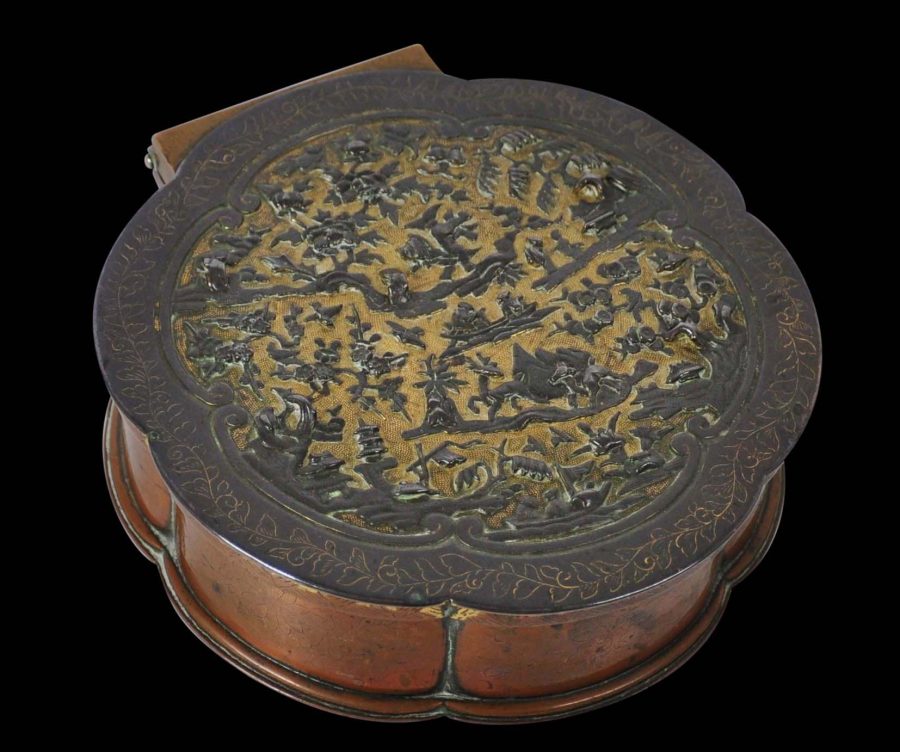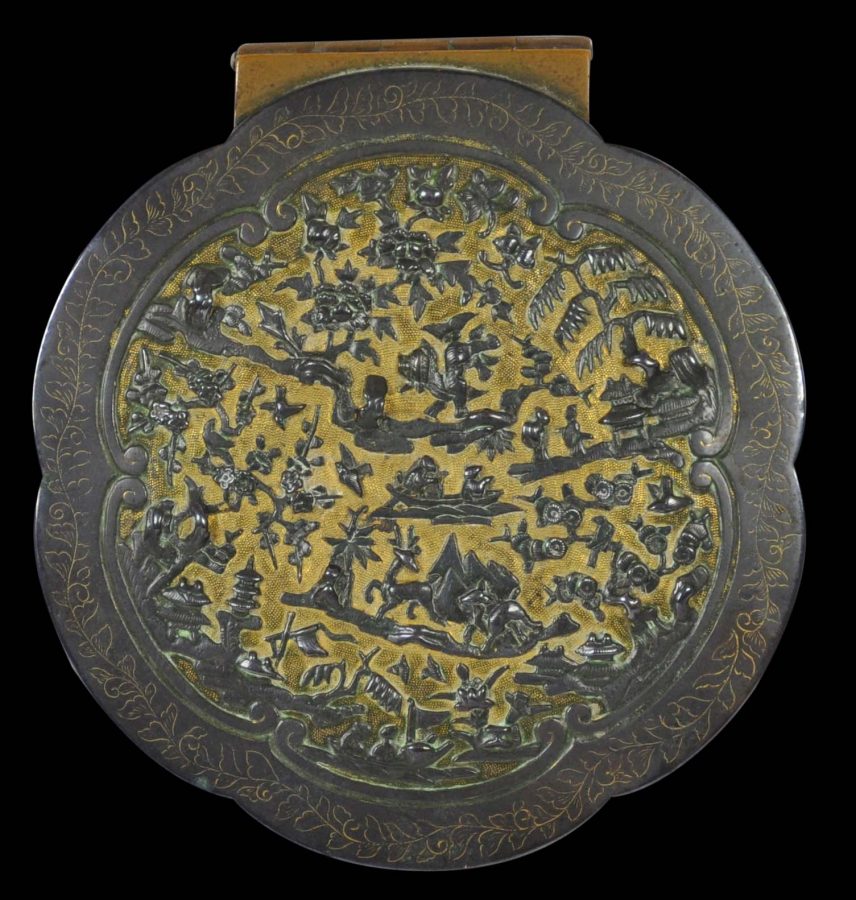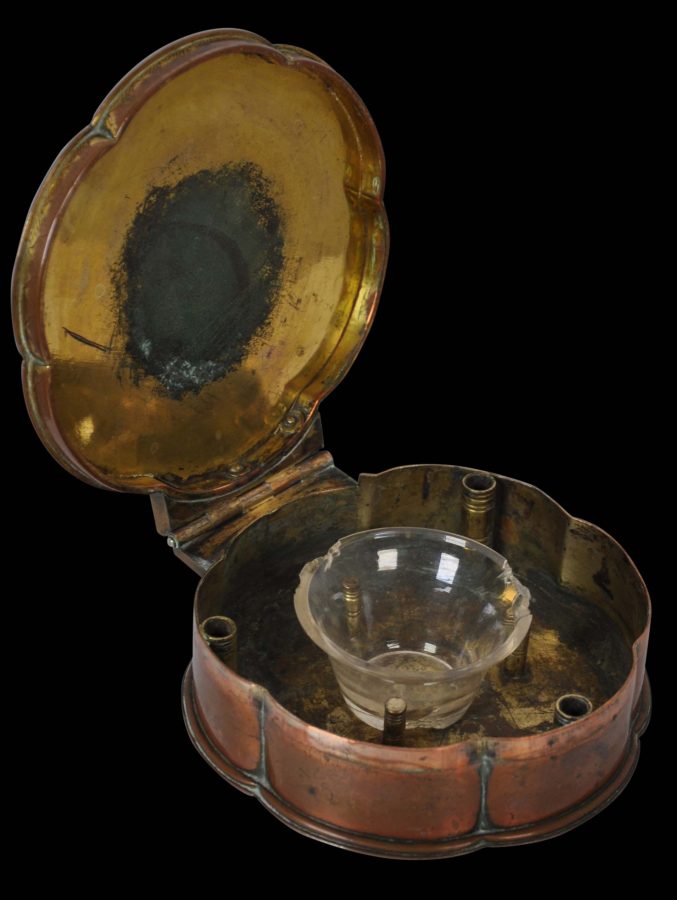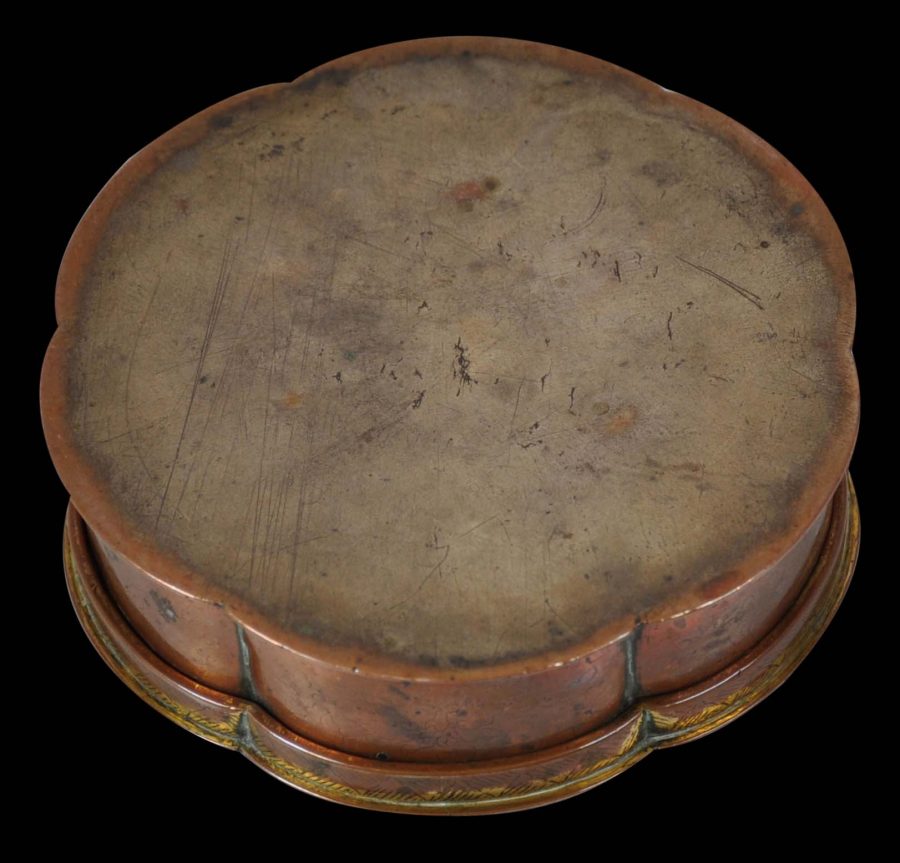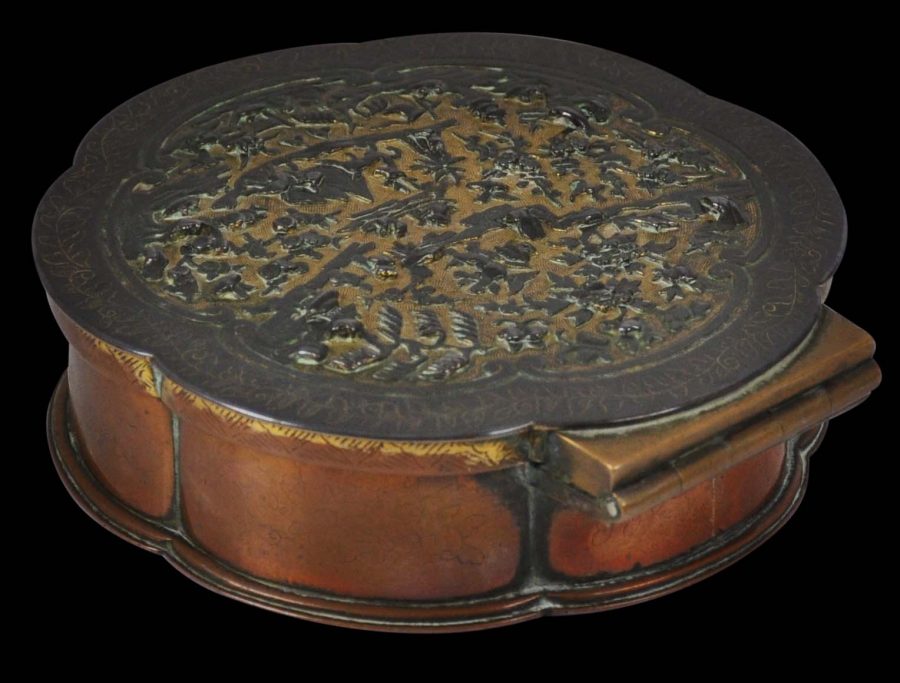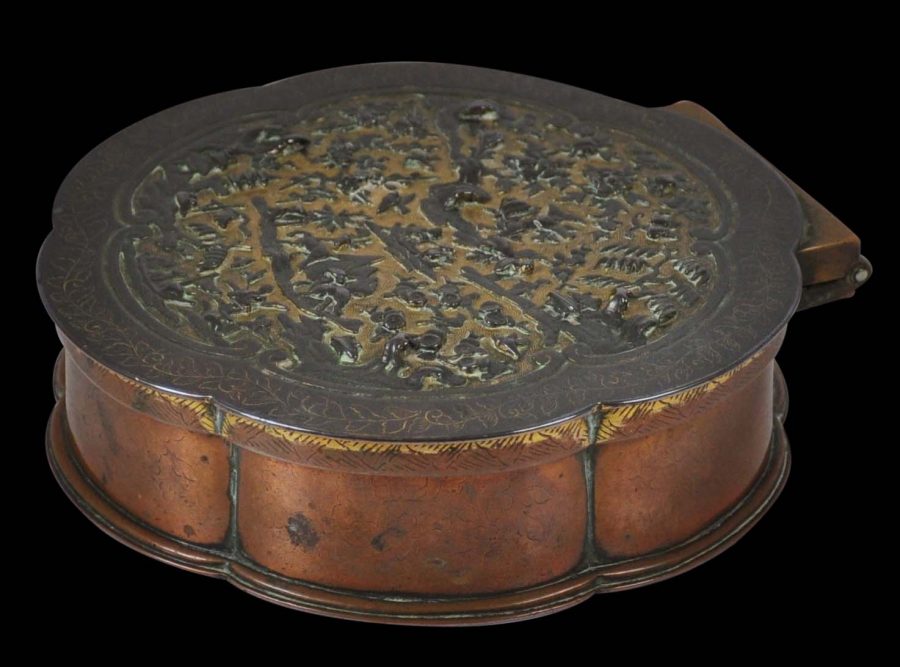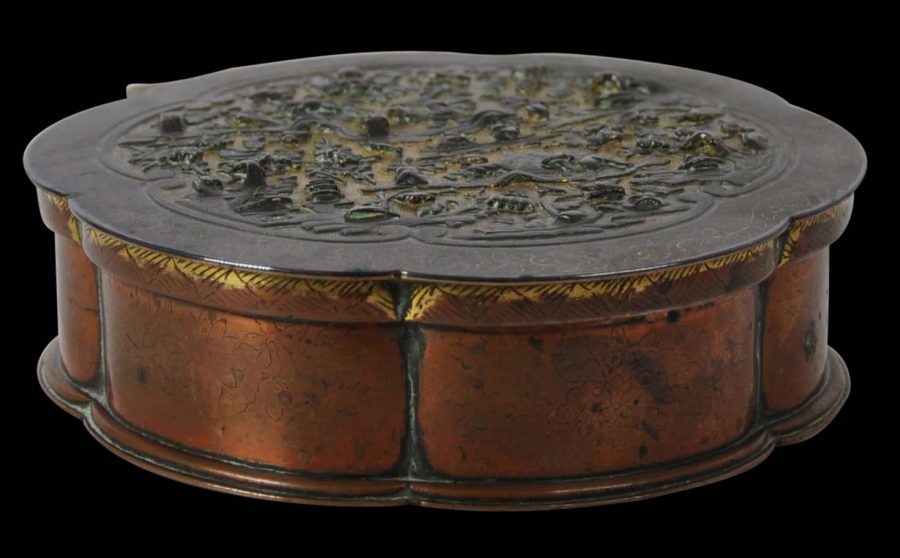Enquiry about object: 5567
Rare & Large Dutch Colonial Sawasa Gold Alloy Lidded Box
Made for the Dutch Colonial Market, most probably in Japan, and possibly Batavia or Tonkin (North Vietnam) 17th-early 18th century
diameter at widest point: 13.5cm, height: 3.5cm, weight: 726g
Provenance
UK art market
This highly unusual box with a hinged lid is part of a small group of items known as sawasa or Tonkinware. The box is large (it sits over the hand rather than in the palm) and with scalloped sides. The lid is decorated in black high relief against a gold, tooled ground with plum blossoms, deer, pagodas and a lake scene which includes fishermen afloat in small boats. The outer border is lightly engraved with scrolling fern designs, as are the sides of the box.
Nothing quite like this box appears to have been published. It is unusually large and its function is not clear. Most probably it was intended to serve as a scribe’s box enclosing an inkwell, or perhaps it functioned as a small personal portable holder for an oil lamp, with a glass dish in the centre for holding the oil and the rest of the box to hold the wick. Perhaps such a lamp might have been used by a more well-to-do traveller aboard a sailing ship. (An old, but chipped glass dish still is present in the lamp.) Most extant boxes made using the sawasa technique are much smaller and were intended to be used as snuff, tobacco and incense boxes.
The large, external hinge suggests an earlier dating. As the 18th century progressed, hinges on sawasa boxes tended to become more integrated and discrete.
Most sawasa items were produced in Japan for the Dutch in the 17th and 18th centuries. It is also possible that sawasa items also were commissioned by the Dutch from artisans in (or near) Batavia in what was then the Dutch East Indies (largely, modern Indonesia today) or from Tonkin (what is now northern Vietnam). Sawasa items were not necessarily commissioned for export back to Holland or the rest of Europe but were made for use by expatriate Dutch colonialists and administrators in Asia itself.
Sawasa items were made from an alloy of copper with gold, silver and arsenic which were then finished with a surface decoration of black lacquer and mercury fire gilding (gold plating). Sawasa items typically have panels that are chiselled in high relief with intricate patterns and Oriental scenes, as is the case with the example here.
The box here is in fine condition and is without dents, splits or repairs. The sides would have been gilded but this has largely worn away from use demonstrating its utilitarian nature.
References
de Bruijn, M., et al, Sawasa: Japanese Export Art in Black and Gold, 1650-1800, Rijksmuseum/Waanders Publishers, 1998.


